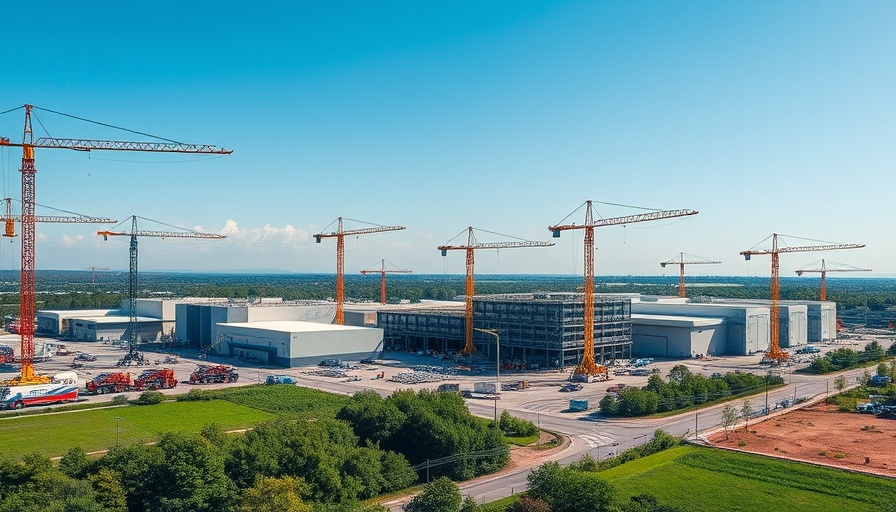
Texas Takes the Lead in Commercial Construction Spending
When it comes to commercial construction spending, Texas stands out as a powerhouse, leading the nation with an impressive nearly $90 billion spent annually. This figure is more than double that of any other state, underscoring Texas's dominance in the commercial construction landscape. Meanwhile, Arizona claims the top spot in per-capita spending, signaling a surge in investments that reflects broader economic trends.
Understanding the Construction Surge: Factors at Play
A recent report by Twisted Nail, a construction aggregate supplier, highlights the ongoing commercial construction boom particularly across the Sun Belt. This surge is fueled by a combination of federal incentives, a wave of manufacturing investments, and robust population growth in these regions. As states like Texas and Arizona continue to grow economically, the construction sector sees parallel growth, particularly within fields such as clean energy and semiconductor manufacturing, which have benefitted from policy shifts aimed at boosting domestic production.
Comparing Spending: The Urban Behemoths vs. Rising Stars
While populous states such as California, New York, and Florida continue to report significant spending levels, their per-capita rankings have diminished in light of the rapid growth observed in states to the south and southwest. This trend highlights a critical contrast between traditional economic powerhouses and emerging states that are capitalizing on current policy incentives and increased demand for construction projects.
A Closer Look at Key Contributors to the Spending Boom
The report underscores that manufacturing construction is leading all spending categories, showcasing an astonishing 135% increase in inflation-adjusted spending since 2019. This rise has been particularly driven by federal incentives aimed at boosting domestic production across several industries, including warehousing and automotive, which also experienced notable gains. With these changes, the landscape of commercial construction in the U.S. is rapidly evolving.
The Role of Federal Incentives in Shaping Construction Trends
The spending patterns in commercial construction reflect broader economic policies favoring infrastructure investments, especially aimed at boosting manufacturing capacity. Federal incentives, such as those initialized to support the pandemic recovery and push for domestic manufacturing, have played a pivotal role in directing capital investments toward more sustainable projects. This presents a fresh opportunity for states like Texas and Arizona to capitalize further on their growth trajectories.
Future Predictions: What Lies Ahead for Commercial Construction?
As we move further into the year, commercial construction spending is projected to continue its growth, potentially reaching over $740 billion nationally by early 2025. This would mark one of the highest levels in over two decades, as the demand for commercial space and infrastructure investments remains strong. The future appears bright for construction in flourishing states, yet it also necessitates anticipating potential challenges, such as labor shortages and material costs that could impact project timelines and budgets.
Conclusion: Implications for Home Service Contractors
As stakeholders in the home service industry, contractors should leverage these insights to position themselves effectively in the market. Understanding the dynamics of commercial construction spending could lead to new opportunities for partnerships and projects in areas experiencing growth. By staying informed about these trends, contractors can navigate the evolving landscape and maximize their business potential.
 Add Row
Add Row  Add
Add 




Write A Comment